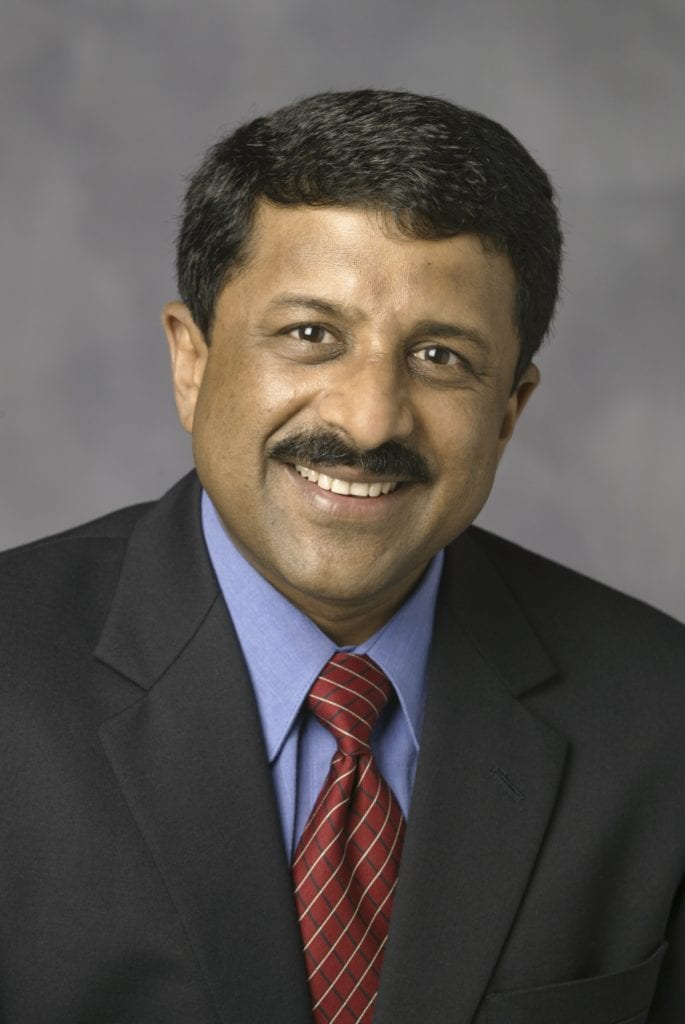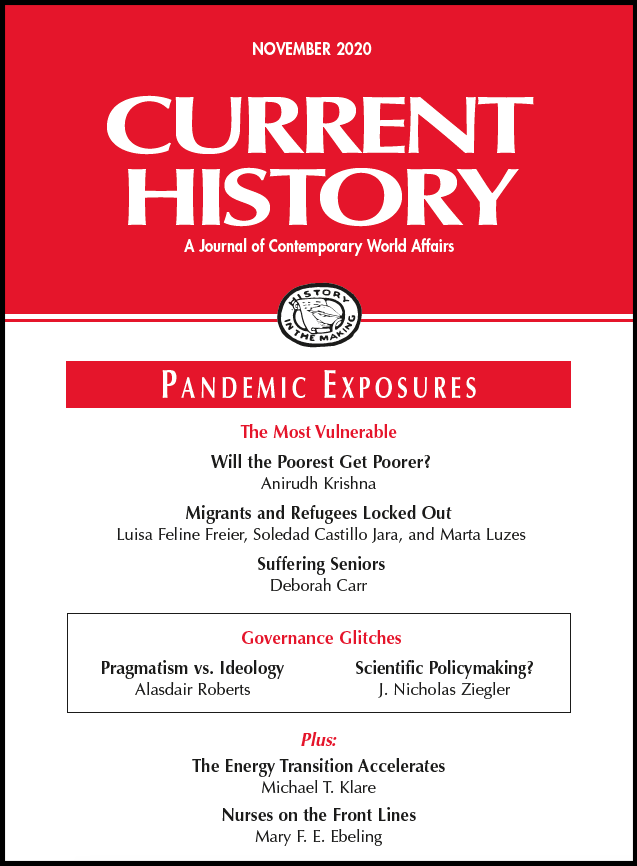
Anirudh Krishna’s essay “The Poorest After the Pandemic” is featured in Current History’s November special issue on the pandemic’s global ramifications. Krishna is the Edgar T. Thompson Professor of Public Policy and Political Science at Duke University. His research investigates how poor communities and individuals in developing countries cope with the structural and personal constraints that result in poverty and powerlessness. He fielded the following questions from Current History editor Joshua Lustig via email.
Let me start by asking you about your background: before going into academia, you worked as a civil servant in India for a decade and a half. What kind of work did you do, and was that what put you on the path that led you to researching poverty and social mobility?
I grew up comfortably middle class in New Delhi, India. We spoke both English and Hindi at home. My sister and I went to expensive private schools as did everyone else in our social class, whom at that time we thought was everyone in the world.
When I was in high school I developed a love for climbing in the Himalayas. I made friends with kids my age in the villages I hiked through on my way to high-mountain passes, and that’s when I came to see poverty closely for the first time. It came as a shock to realize that while I dreamed of becoming a civil servant or a college professor, kids in these villages as smart or smarter than I thought only of becoming farmers and porters. Or maybe schoolteachers. The unfairness of it all disturbed me.
After a master’s in economics, I opted to become a civil servant. Being within government seemed the best place at that time for doing something meaningful about poverty. I worked in remote rural areas for the first ten years with responsibilities ranging from adjudicating property disputes and maintaining the law to designing and managing programs for urban and rural development. It was a fascinating learning experience. I got an inside look into the lives of thousands of people. I learned a great deal about what poverty is, not just how it is defined or measured. I try and keep this learning alive by doing a great deal of field research each year.
In your essay in Current History’s November special issue, you mention that you and a group of colleagues have been carrying out large-scale surveys of poverty—in some 40,000 households in countries around the world—for 20 years now. Could you explain a bit about how you conduct that kind of long-term study on that scale? How much of it is sort of a big data project, and how much fieldwork goes into it to get more granular detail—do you interview some of the study participants yourself and see how they live firsthand?
The centerpiece of these investigations is the granular accounts we have collected of thousands of individual households’ journeys through poverty—how someone was born in a well-to-do household but later suffered a series of reverses and is now desperately poor, or how someone else grew up poor and because of a certain set of events was able to move up and is now middle class. We have thousands of such household event histories extending 15–25 years, detailing key events associated with the upturns and downturns particular households experienced.
Aggregating over thousands of households in each location helped elicit the nature of events that are most frequently associated with households’ movements into (or out of) poverty in that region. We also surveyed each of these households with a standard battery of questions about consumption, wealth, education, etc. So, yes, we have firsthand interviews with rich granular detail, and yes, it is also a big-data project, though of a special kind.
We did the bulk of these interviews between 2002 and 2008. It was a huge undertaking, involving dozens of people in each of various locations in India, Kenya, Peru, Uganda, and North Carolina. I interviewed some households in each location, as did my co-principal investigators. Mostly, though, study teams composed of 6-10 local young men and women recruited locally, from among the same kinds of poor communities as the ones we wished to study, did the bulk of this work. I trained with each study team over three to five weeks, traveling with them into remote rural locations and working beside them for as long as it took them to gain confidence in the study methods and take command. Since that time, we have gone back sporadically to some of the same households, while also adding some new study locations.
In 2018, we—the co-principal investigators—undertook a series of pilots with the intent of launching a full-scale revisit. I was skeptical initially that we would be able to reconnect with the households we had met 10–15 years earlier, but in our pilots in rural areas of Kenya, India, and Uganda we reconnected with more than 90% of the original households (or their direct descendants). Excited by these high re-contact rates, we had planned to revisit a much larger number of communities and households—but that’s when the coronavirus struck and made field research impossible, putting this work on hold.
Touching on the theme of your essay in the special issue, there have been predictions from the World Bank and others that this pandemic is going to drive up the numbers of global poverty—possibly a big setback after the recent progress in poverty reduction. Based on your research, what are the key characteristics that put certain countries at the greatest risk of seeing a large rise in poverty during this pandemic or similarly disruptive global events? And what kinds of policies should those countries be adopting to better protect their people against poverty?
Two kinds of routes into poverty arise on account of two sets of characteristics. First, a high rate of infection coupled with high out-of-pocket payments for healthcare—the Health Route, which is a bigger problem in countries that have not invested enough in making high-quality health care accessible and affordable to ordinary people. This group includes, notably, some populous countries in West Africa.
The second route into poverty, the Livelihoods Route, is likely to be a greater problem in countries with two characteristics—large informal sectors and many people living in near-poverty (above $1.90 and below $3.20 per day). Increases in poverty on this account are more likely in South Asia and parts of west and east Africa.
How can policies help? Basically, governments need to better protect their people against the risks and uncertainties of everyday living. It shouldn’t be that one illness or one flood strips the shirt off people’s backs and makes them chronically poor. Human dignity requires social protections. High-quality health care is foremost, followed by more formalized job conditions. Both these protections are available in some richer countries (though not all) and also some poorer ones, which shows that affordability is not in question. Opportunities for upward mobility are also part of a fair deal. Talent is randomly distributed at birth. But only in a very few countries does the child of a janitor routinely become a business executive or college professor.

